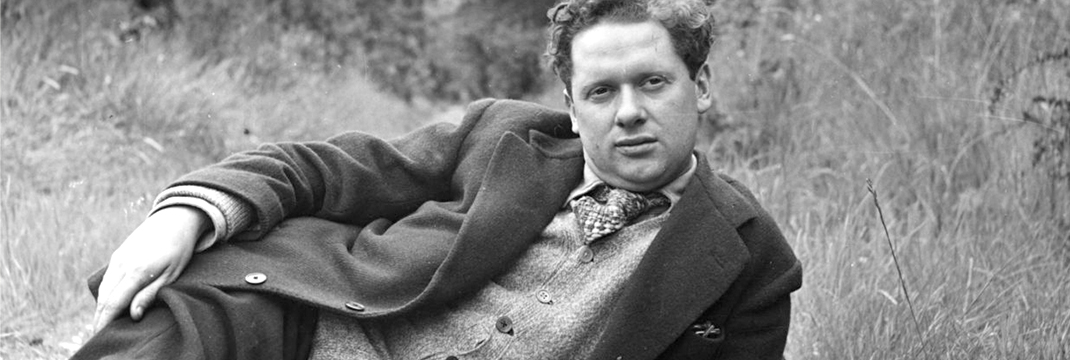
The poem Do Not Go Gentle into That Good Night is a perfect example of a well-structured poem. It had a certain influence on the audience since its publication. It is a masterpiece of Dylan Thomas. Dylan was the son of David John Thomas who was an English teacher and had developed a deep love for literature. Like father like son, Dylan followed his father and became a giant in already overcrowded literature scene. The piece of art is about death. Dylan attempts to convince his dying father to fight against the looming death. He compares his father with a good man, brave man, and wise man to make him understand that no matter what one has achieved in his entire life, he must not give in to death. It challenges his father to fight for his life. I assume that it is a great piece of literature. It uses the imagery in a wonderful way to illustrate its theme.
There are two ideas illustrated in the poem. Dylan Thomas does not support the idea that such an exciting and noble man like his father should die without a fight. The speaker makes the reader contemplate that death should not be willingly accepted, it should be fought. He creates an image in the mind of the reader symbolizing death as an enemy. By all means, the enemy should be kept away in order not to destroy what one has been living for. He tells his father that he should refuse to go down to the loins of death. Glory is another eminent idea in the poem. “Ancient age should burn and rave at the close of day; Rage, rage against the dying of that light.” The speaker illustrates that old age should only bring the joy of what has already been labored for. In fact, it should be the last thing one has to accept and at the end, it should crown one’s efforts in life.
In relation to the poem, the two images create the real picture intended by the speaker. He clearly shows that life is too precious to waste. In regard to his father, he clearly portrays his emotions. It is obvious that he is mentally and emotionally attached to his father. “And you, my father, there on the sad height, Curse, bless, me now with your fierce tears, I pray.” He is not ready to end the relationship. On the other hand, he courageously tells his father to bless him, in contrast to what he had been telling him.
Along with the first order offer - 15% discount (code firstpaper15), you save an extra 10% since we provide 300 words/page instead of 275 words/page.
Also, Thomas Dylan has used several senses constructively. He has successfully used them not only to make his point but also to connect with his readers. Firstly, he creates some sense of belonging. He is so attached to his father that once death comes, he is fast encouraging him to fight it. Secondly, he creates a sense of frustration to himself. He is desperate to retain his father against old age. At the end of the poem, he creates a sense of humor to release the tension. “Blind eyes could blaze like meteors and be gay.”
According to Dylan, there is more than what meets the eye. He has used certain stylistic devices to add some icing to the already sweet cake. In the lines 4-6, he has used mystifying imagery: a lightning bolt that is not forked or split by the words of wise men. The image of wise men creates the image of old men with some treasure, wisdom. It relates to his father, as he was an old man with a rich history in English literature. Alliteration is also evident in the poem. “Blinding,” “blind,” “blaze,” and “be.” The repletion of the initial consonant “b” makes it evident as the reader goes on. It makes the reader enjoy reading and adds glamor to the piece of literature.
In a metaphorical sagacity, the poem presents us with a paradox as another uniquely used style. “The dying men who have gone blind can still “see” what a blind man is seeing.” This line provides some hidden meaning activating the reader’s mind to think broader and widen the perception of the poem. Repetition and assonance are also applied in the poem. Repetition of the word “rage” draws attention to the main theme in the poem: to fight. It has been repeated from the first stanza to the last.
Repetition of the vowel sound also known as assonance has been used in an interesting way creating a beautiful picture of the poem; for example, “dying” and “light.” It illustrates the poet as a smart and well-accessioned literature writer. The stanzas have been well-structured having three lines each. The last lines of all stanzas are similar with the exception of the subsequent. It creates the concept of rhyme in the poem.
In conclusion, the overall meaning and value of the poem are in black and white. Dylan the writer also the speaker compels his dying father to fight against his impending death. He is convinced that one should not give in to death but rather resist it. The speaker compares his father with wise men and good men. The poem has a value not only to his father but also to all readers who come across his works. It is an encouragement to all those facing frustrating situations not to give in and to find solutions to the problems. The message is clear: keep fighting. Based on the intention of the author the poem appears to be effective. He successfully encourages his dying father to keep the fire blazing and not let the furnace be easily blown by the wind. The readers of the poem should appreciate its effectiveness and encouraging tone.



